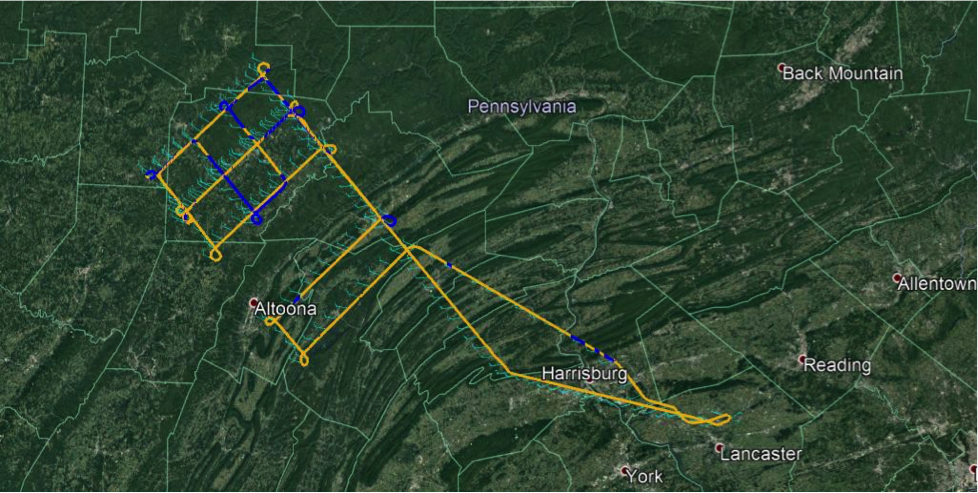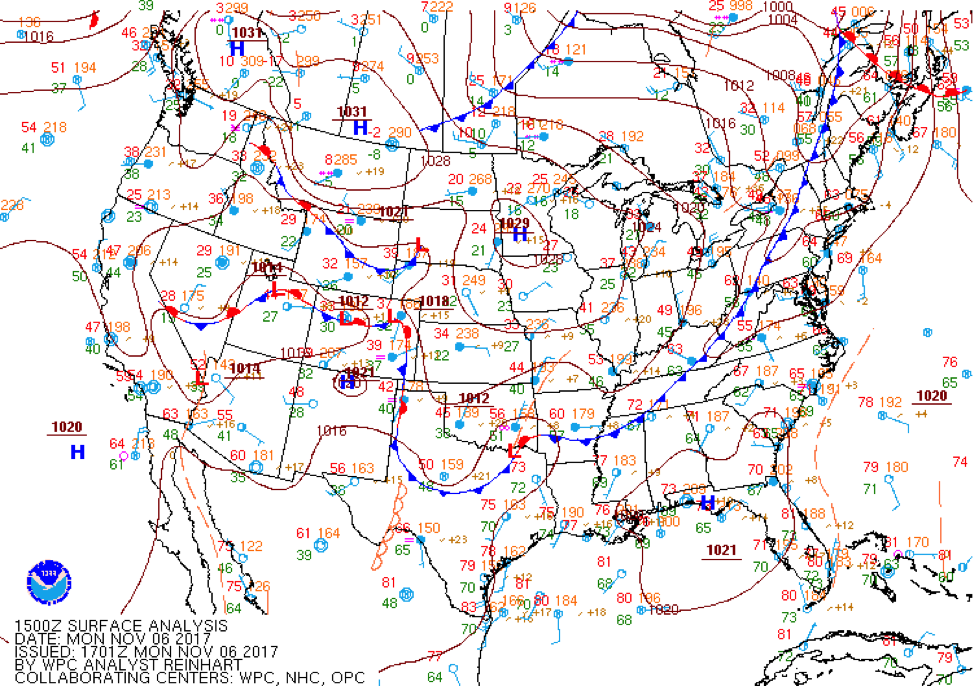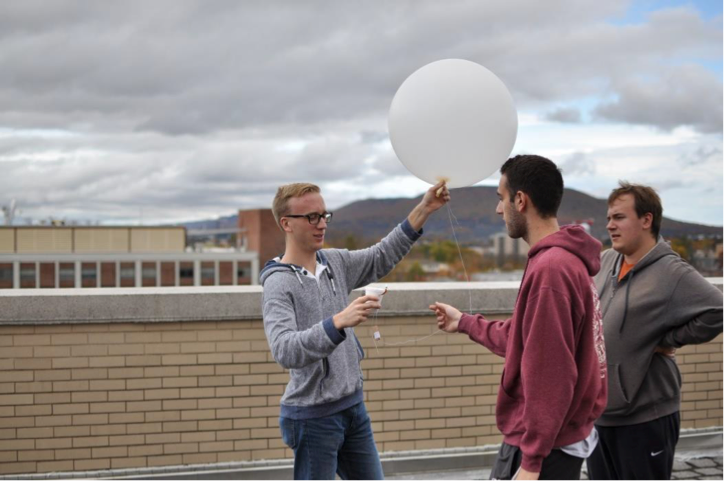On 6 November 2017, a mission was flown (RF02) in support of the first science objective to investigate the fine structure of cold fronts. The UWKA departed KLNS at 1400 UTC and returned at 1753 UTC. The mission was to ascend to and maintain constant altitude at 1500 m AGL). Fig. 7 shows the UWKA flight track created using Google Earth.®
The UWKA transited first to the Allegheny Plateau, where a series off lawnmower tracks were flown in the vicinity of the analyzed surface front in Figure 8. The lawnmower pattern was selected to investigate the terrain-induced influence on frontal ebb and surge, discrete propagation of fronts, frontal width, and narrow cold-frontal rainband passage.
That cold front moved quickly to the southeast during the mission, being located near Philadelphia, PA by 1800 UTC 5 November 2017 WPC surface analysis (not shown). An attempt was made to sample the cold front after it moved from the Allegheny Plateau to the convoluted ridge and valley system southwest of State College, PA. Hence, the UWKA flew a second truncated southern lawnmower pattern before returning to KLNS.
Radiosondes were launched in support of the RF02 mission by PSU at University Park, PA at 1200 UTC, 1500 UTC, and 1800 UTC (all 6 November 2017). Radiosondes were also launched by MU at 1800 UTC, 2100 UTC, (both on 6 November 2017) and at 00000 UTC on 7 November 2017.
As of the time of this writing, data from the UWKA for this mission as not been analyzed in detail. Erin Jones, senior MU meteorology major, Honors College Scholar, and Hollings Scholar, is using SEAR-MAR data obtained during this science mission for her Honors thesis, entitled the “Impact of local radiosonde observations in high-resolution WRF simulations.”


